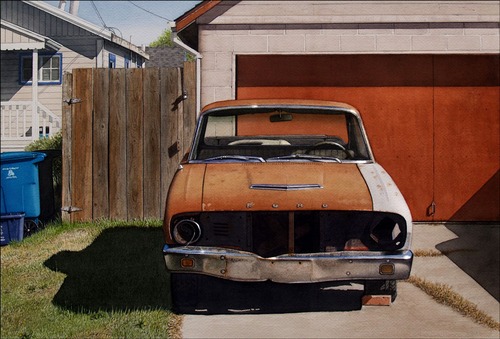
It seems to me that another thing marketing does, when applied to mass entertainment narratives, is teach and normalize all the skills and expertise of the used-car salesmen. How to ingratiate.
I see this in actors all the time. It’s always been there, but it has become more prevalent these days. In fact, I see it in once very good actors who have plugged themselves into the mass entertainment system.
In that respect, it’s interesting to ponder the effect of agents on all levels of culture. I often wonder at why promising actors will accept some of the projects they do — and simply to say *money* is not enough of an answer — although it raises a secondary question (again) about how much does one need? How much money is enough money?
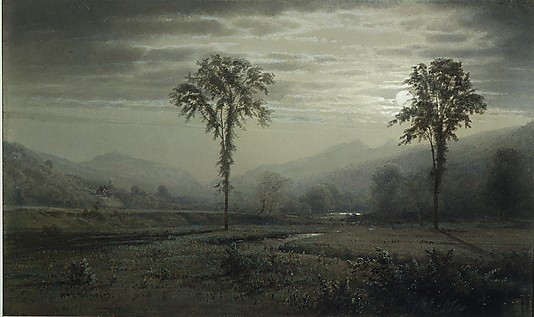
I’ve seen actors utterly absorb a text by appealing to the consensus on “naturalistic”. How this happens is often subtle, although also often not. How it is achieved is insert consensus ideas on “character” in place of saying the text. I can think of few plays that wouldn’t have been better if the actor simply said his lines. Stood on stage and said the lines. Period. Flat, blank, but carefully. Coltrane once remarked the hardest thing to do was play a melody through once perfectly, without any mistakes. I believe this is why he recorded his album of standards.

There is a dialectic in this, though. Perhaps it has to with generalizing on the one hand, and intensifying on the other. I remember when photo-realist artists emerged in the 1960s say, and later the various branches of hyper-realism or super-realism — and I was fascinated but uncertain as to why I was fascinated. Today I find much of the work of Ralph Goings, Rod Penner, Richard Estes, Xavier Veilhan, Ron Mueck, et al. to be highly relevant to theatre and film. And to writing. It is worth noting that in principle, or in theory, the photo-realists were copying (whatever that means, actually) the photographic image, and hyper-realists were imparting a narrative. They were creating a Baudrillardian world of simulacra, and in that sense were creating “a simulation of something that never existed”.
In a cultural and societal landscape colonized by marketing, and saturated with ‘image’, especially with digital image, it is interesting to examine how artists have reacted to this saturation. The hyper-realists were concerned with digital image (in the way photo-realists were with analog images) and the creation of a uncertainty about versimilitude. Theatre must approach this through text, and perhaps more importantly, through performance. What is the actor doing when he says his lines? He is peforming ….but he or she is performing a “character” — and that character is based or found in the text.
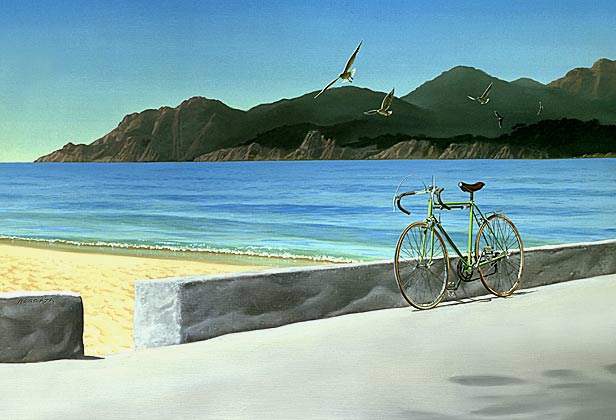
What directors like Robert Wilson have done is remove the text. This is an approach that seems to me to adhere to a kind of reactionary aesthetic, because without text one is doing marketing. It is in the text that one finds the melody, as it were. If one looks at the influence of Polish directors like Kanter, one sees another avenue towards the creation of (what I have come to call) *space*. Again, however, the text is secondary.
In the work of Peter Handke, Franz Xavier Kroetz, or Heiner Muller, the text has become foregrounded in a way that demands the performative not ignore it.
But let me back track just a second; for its important to note some background influences here and some distinctions. Hyper-realism is not trompe L’oeil. One is not ‘fooling’ the eye. And this is important. One is aware one is looking at a painting. In the same sense one is aware in a theatre of being in a theatre. Of being witness to a performance. To a ceremonial activity. The mimetic re-narrating then must not retreat to the comfort level asked by marketing campaigns and their images.

The performances in much theatre and film today are in the service of obscuring the narrative and text, by absorbing it within a collection of received ticks and gestural cliches meant to signify normal and to be easily accessed as ‘real’. The result is the text is on mute.
The mimetic is always working with a sense of memory. Marketing erases memory. Now, digital image also has a tendency toward a forgetting. How and why this happens is its own topic, and it’s something I will return to in a later post. It’s interesting to look back at the rise of abstraction and its eclipse of realist traditions in painting. That Hopper was painting at the same time as DeKooning and that the early photo-realists happened upon this same moment suggests there was a mass reaction, culturally, to the rise of marketing. There was a sense that image had been cheapened and co-opted.
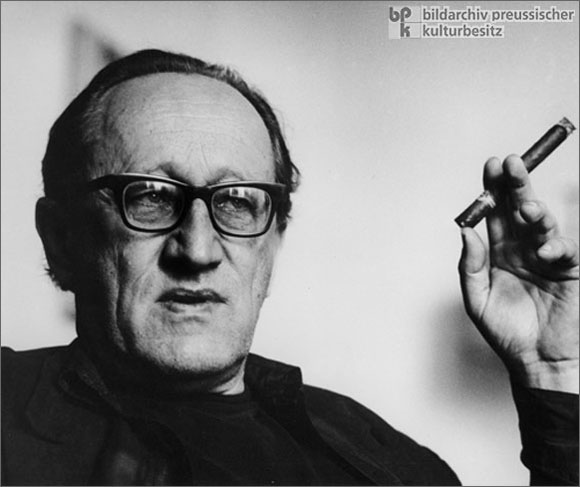
In terms of narrative, and of theatre, one sees a sense of reaction — in obvious and overtly political ways — in people like Muller. But Muller was inclined toward the subversion of traditional narrative via the use of found texts. His emphasis was on *association* and not developmental narrative. He was out to destroy plot. (worth noting the idiotic Zizek critique of the documentary on Muller…but I digress). Muller looked to tear away the mechanisms of absorption. It is not unimportant that he also loved American crime fiction (Hammett, Thompson, Ross Macdonald et al)…and found in such narratives a less mediated portrait of social domination. Handke did this in another way. The resulting clarity of his theatre was akin to that of Muller, however. In his prose, Handke looked to distill the reflexive blindess of the mass populace to political realities (his defense of Serbian rights and of Milosevic finally alienated him to the degree that he simply withdrew from public life. *as a side note, we were both on the committee to defend Milosevic.). In both Handke and Muller the text, however it was constructed, was insisting on a listening, it was not removed or distanced. To remove it, ala Wilson, is to become just high brow marketing.
I think there is a relationship between the hyper-realist rethinking of image and what Muller and Handke did with text. The link is to the performative capacity of image. And to the mimetic re-telling of our own stories, and of our own tragic debilitation at the hands of neo-liberalism’s construction of a pre-fab reality. The post modern reactions to narrative have been largely a normalizing of marketed reality. A normalizing of propaganda. The peformative adjunct to this is the used car salesman as dramatic icon. The mediated real must be reinforced.
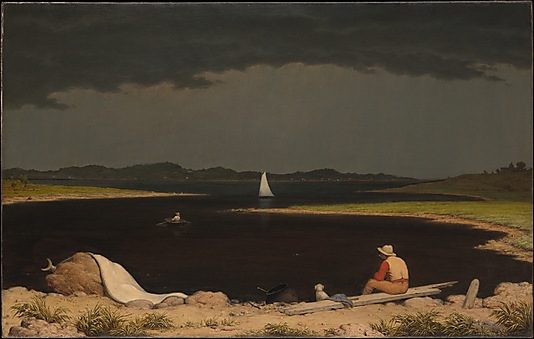
The extreme nature of today’s kistch performances — extreme in the sense of just how insistent the gestures and inflections of ingratiation have become, has made the work of Muller or Handke, or even Beckett and Genet or Kane, seem increasingly acute and subversive aesthetically. However, even the most austere and carefully calibrated text can be performed as if it were a Cal Worthington commercial.
Actors express their own desire, regardless of direction. It is a particular sort of challange to make them *hear* the text they speak. Benjamin wrote of early photography, that the need for stillness in the subject (due to slow film) resulted in a certain gravitas (with a host of secondary characteristics).
From Art in the Age of Mechanical Reproduction…
In photography, exhibition value begins to displace cult value all along the line. But cult value does not give way without resistance. It retires into an ultimate retrenchment: the human countenance. It is no accident that the portrait was the focal point of early photography. The cult of remembrance of loved ones, absent or dead, offers a last refuge for the cult value of the picture. For the last time the aura emanates from the early photographs in the fleeting expression of a human face. This is what constitutes their melancholy, incomparable beauty. But as man withdraws from the photographic image, the exhibition value for the first time shows its superiority to the ritual value. To have pinpointed this new stage constitutes the incomparable significance of Atget, who, around 1900, took photographs of deserted Paris streets. It has quite justly been said of him that he photographed them like scenes of crime. The scene of a crime, too, is deserted; it is photographed for the purpose of establishing evidence. With Atget, photographs become standard evidence for historical occurrences, and acquire a hidden political significance. They demand a specific kind of approach; free-floating contemplation is not appropriate to them. They stir the viewer; he feels challenged by them in a new way. At the same time picture magazines begin to put up signposts for him, right ones or wrong ones, no matter. For the first time, captions have become obligatory. And it is clear that they have an altogether different character than the title of a painting. The directives which the captions give to those looking at pictures in illustrated magazines soon become even more explicit and more imperative in the film where the meaning of each single picture appears to be prescribed by the sequence of all preceding ones.
Crime resurfaces again and again as a touchstone of psychic construction. The advances in technology robbed artwork of its last link to the mythic or cultic past. It also transformed the idea of audience.

There is also something in the erasure of silence. To watch commercials is to be assaulted with loudness. Narrative has its own form of loudness. The cheapening of pain and torture is accompanied by loud screams…whether it is Zero Dark Thirty or a TV hospital show. The silence of grief is washing away by the noise of yelling or the screams of pain. The audience is ever more passive, for in film the actor does not respond to his or her audience. And the audience does not respond to the invitations of the actor. Today’s theatre mimics film in this respect. Actors seek audience approval, not careful contemplation of his or her psychic nakedness.
In early photography, as Benjamin points out, the long exposure time created a sense of duration, and of mystery. The advancing technology had a political effect, the individual photographed by Sander was replaced with the photographing of classes of individuals. Human relations were commodified. Today, the mass circulation of image provides a sense of the individual’s fungibility, and are made manipulable. Mass entertainment indicates the disposibility of the human.
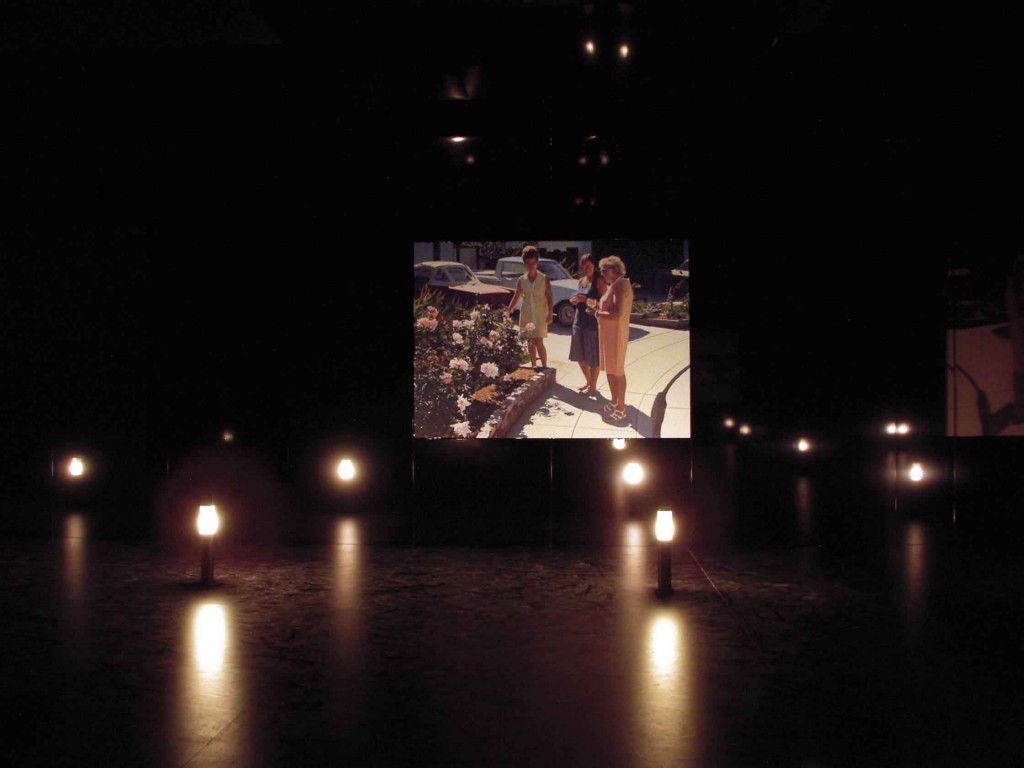
Art is there, in one sense, to counter the Kantian (scientific) notion of experience. The ceremonial space of artworks engage with history both individual and societal.
One of Benjamin’s more recondite paragraphs is on language…….
Language communicates the linguistic being of things. The clearest manifestation of this being, however, is language itself. The answer to the question “What does language communicate?” is therefore “All language communicates itself” . . . this capacity for communication is language itself.
For Benjamin, language (and art) are oriented towards an incommensurable other. The sense of the divine pervades this, but which for Benjamin held a magical place, a Kabalistic sense of infinite reference.
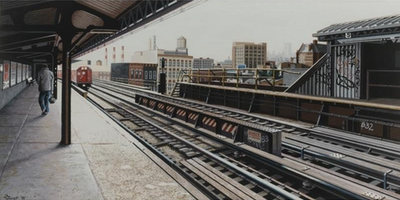
In theatre, the text on stage is (as Mednick always said) a form of thinking. For Benjamin, language was not a means of communication, but was more, the creator of relationships. Language meant itself, finally. A divine self. Language ended in silence. The assault of corporate mass media has served to sever relationships natural to language and simply created a revisionist library of meanings, none of which really have duration beyond their immediate exchange value. There is a large topic to be explored in how language creates a virtual world, a linguistic world, but infinitely translatable to other temporary meanings. Still, to speak, on stage, without accessing the storehouse of kistch meanings (the pandering quality of much double speak and propaganda) is to posit that sense of history, of allegory, and delphic mystery. This leads back round to what we mean by “realism”. For “realism” is the very least realistic of phenomenon.
Benjamin once said that ‘future illiterates are those who cannot read photographs”.
In one sense this is already true. The illiterates are those who cannot hear, as well.
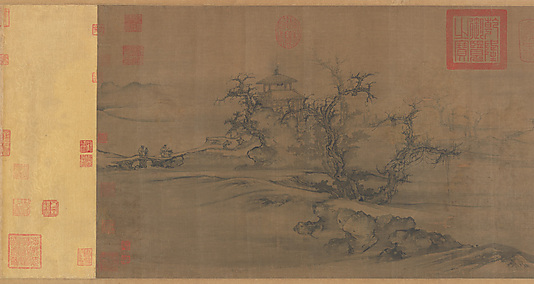
Today’s audience is defined by its anticipation. The sense of expectation is now directly connected to the rewards of familiarity.
We are awash in terms of appreciation that focus on technical matters … *reality effect*, or *performative indexicality*. Authenticity is graded according to technical accomplishment…and that in turn references
Mika Elo, in writing of Benjamin, says….
Here, Benjamin’s media aesthetics opens highly relevant perspectives by raising the question to what extent visual literacy might be explicated in the model of textuality. In the light of the language-philosophical roots of Benjamin’s media aesthetics, photography appears as a language that “never gives mere signs.” It is a historical configuration of technology and metaphysics expressing in its articulations a residue of the magical community of languages marked by various modes of sense-production. In short, the ways in which photography “makes sense” are not to be reduced to semiosis. Photography also produces sense by reconfiguring aesthesis, that is, the processes constituting the frame of sense experience. What is at stake here is a “linguistic” dimension beyond signs. Benjamin’s notion of “optical unconscious” can help us illuminate this.
There is an appeal in all this to psychoanalysis, what Benjamin (I think) termed the ‘optical unconscious’. There are images that exceed our ability to read them…or read them coherently, and systematically. In any medium today, the strategy must take all of this into account. Text however, remains, for language remains.
In his Little History of Photography, Benjamin writes…
Yet at the same time, photography reveals in this material physiognomic aspects, image worlds, which dwell in the smallest things – meaningful yet covert enough to find a hiding place in waking dreams, but which, enlarged and capable of formulation, make the difference between technology and magic visible as a thoroughly historical variable.
Our waking dreams. Our mimetic reaching back to that which is forgotten. In a culture whose logic is control, and maintenance of domination, the reproduction of story and image geared to sublate individuality and conformism, there is now an increased need for rigour in artists looking for ways to decipher the codes of advanced capital, of authoritarian militaristic spectacles, the path forward would seem to be in reclaiming the space for non-commodified creation. Art cannot be a profession, not without a good deal of careful expelling of the kistch image, the worship of the technical and of generality.

Semblance and play.
These are the two currents of mimesis. They are mutually deposing, or questioning each other…and it is within this tension that the contours of artwork’s space is drawn. Addition by subtraction must almost always be the prevailing strategy. Our mimetic engagement with artworks is firstly a rejection of friendliness and comfort. The carnage of history, and of social domination — the imperialist project as it expands daily to re-colonizing of almost all former colonies, is the logic of exploitation. It is simply given the happy face grin of the used car salesman.
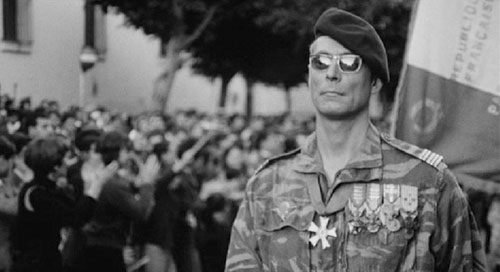
Jean Martin as Col. Mathieu, The Battle of Algiers. 1967

Bobby Seale


Great post, as usual, John. Do you think that one reason why actors take on the roles they do nowadays is because the film (or the token theatre role that somehow “proves” one is a *serious* actor) is not the goal? Could it be that the project is now merely a ticket to a lifestyle? Think of how many openings, red carpet events, parties, vacations, celebrity shows about awards shows we see this time of year. I tend to think that once one has been initiated into a lifestyle, it’s rather hard to let that go. The projects are merely what one has to endure to get the real fix, which is *celebrity* in and of itself. The spectacle of fame is the real show, and all of these celebrities are merely the stars of their own reality series. It’s like social media. If people don’t know what you are doing all of the time, then it’s like your show is in summer repeats or worse, been cancelled. One doesn’t exist unless everyone knows it. The German playwright Falk Richter writes plays dealing specifically with this- Electronic City comes to mind.
Also, it may be a challenge to make the actors *hear* a text but as a vocal teacher myself, the bigger challenge is making them feel it. Not emotionally, but to physically feel the sounds. What you call a move toward the “consensus of ‘naturalistic'” is what I call “mood acting.” It’s derivative, with no real connection to the text. Is it, therefore, reasonable to question actor training, with its emphasis on objective, tactics and obstacles, things that obfuscate the text and layer on rather that reveal in any surprising ways?
I’ve been thinking a hell of a lot about this, in terms of acting, and a few things come to mind.
1) James Dean. Recently, I’ve watched both Rebel Without a Cause and East of Eden, in both films, I find James Dean to tear away at feelings I didn’t know I had. He gets you in the gut and it’s terrifying and embarrassing and obnoxious at once. The scene in East of Eden where Cal tries to give his father (played by Raymond Massey) money for his birthday is a prime example of this. For all the things Dean is, he is not naturalistic and yet the text flows through him while his body is moving in a different direction. I can say the same about very few performances today. Michelle Williams in (the terrible film) My Week with Marilyn comes to mind. So does Joaquin Phoenix in The Master and Ryan Gosling in Drive.
2) In an interview with Michael Silverblatt he was talking about how language is an obstacle in communication. It doesn’t convey. It is itself it’s own thing, but not a too for communication. I found this idea compelling and have thinking about this lately. More often than not, there is miscommunication in language, mistakes and misinterpretations and garbled messages, which makes me believe that we communicate on a much more sensory and personal level. Language is used to cover up. To lie.
As always a great post. I look forward to them.
Ah silverblatt. Always worth listening to- @joe…
I found some notes I made on this topic.—- that is, language vis a vis mimesis, adorno, benjamin. For its benjamin who really advanced this thinking on language —anyway…..
” when language comes close to speaking itself, it becomes music”. / ” Not language imitating sensuous music but rather it is non sensory, and closer to silence.”/ /Egyptian stelle with its captured names—the non identical./
Benjamin: “language as non-representational mimesis…. Link with otherness. / Syntagmatic or metonymic axis of language./ ”
“Mimetic faculty has not withered, with loss of magic and ritutal, but rather has migrated from a more direct perception and reading of correspondences into language:..” (that is the crucial idea and very slippery…..)
“It is non sensuous similarity… (Onomatopoeia IS sensous)…”
‘
this is where benjamin came back to childhood experience…that children imitate not just people but things and nature. And that the mimetic flares up through a bearer…..(semiotic) but then disappears– and that hiding places for children are connected to primordial or archaic forces. This is where the theatre enters the discussion. But i go over all this because for benjamin, language was a tool of communication, but that was a secondary characteristic………..and about a level of communication that was rudimentary- it was always speaking itself. Language speaks itself. It is not really there for communication….it is used this way…….at times. This is a subtle idea, and not easy to discuss in short form, here. But this notion is why writing…when one writes scripts or screenplays for example, it is never what is being said. NEVER what is explained. The whole is never the sum of the parts. There is no concept for any particular play. There is utterance, speech, and within this is a space….mostly of silence I believe.
Adorno said language has two dimensions…..communicatative and poetic. The communicative has over run the poetic to the market….capital…..”and the ignominy of exchange”. Adorno also said poetics are vulnerable to “the layer of mediocre tacit agreement”. “this communicative language works against the recognition and naming of things in their non-identity…. and any divine language of names in which words and objects are not alienated from one another is inaccessible to human beings…because hidden or lost or that they never existed…..still the divine name echos…..”